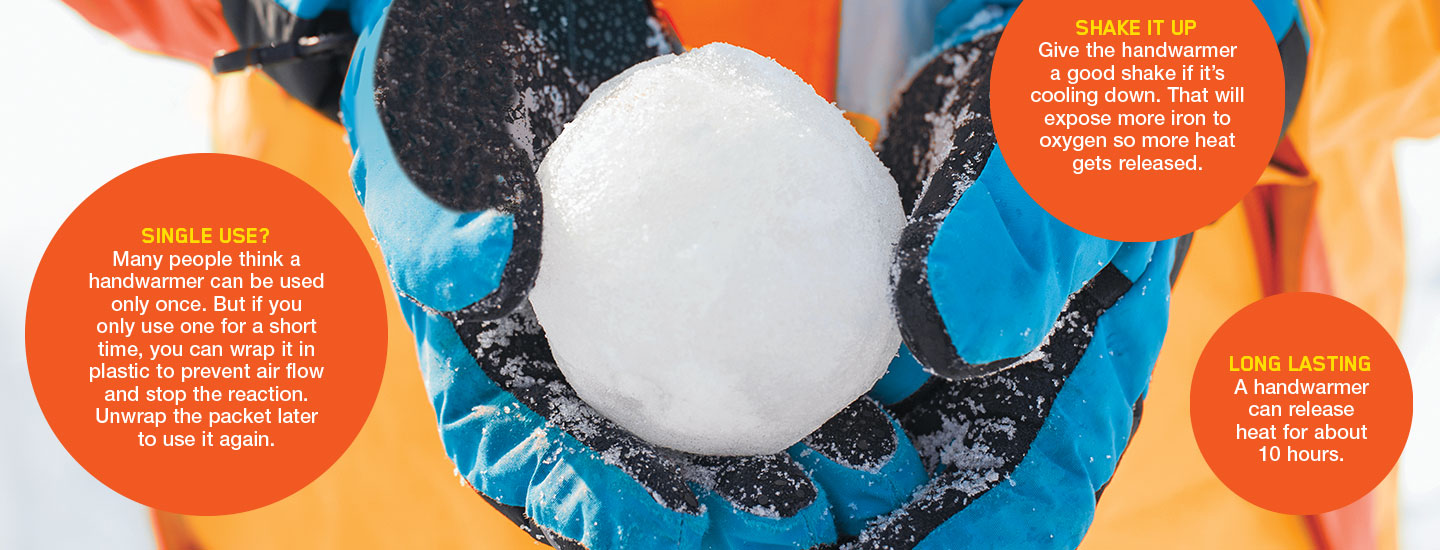You step outside on a winter day to find a fresh layer of snow blanketing the ground. There’s only one thing to do: Make a snowball! You grab a handful of frozen fluff, then another, and another. By now, your fingers should be ice-cold. But you’ve got a trick up your sleeve—or, more accurately, in your gloves. Before you left the house, you tucked handwarmers into your gloves to keep your hands toasty.
Remove a handwarmer packet from its plastic package, give it a shake, and it immediately starts to heat up. Why? It’s thanks to a simple chemical reaction. A handwarmer contains iron (Fe) powder and a small amount of water. When you expose the handwarmer to air, oxygen (O2) enters through tiny holes in the wrapper. That oxygen interacts with iron atoms—the smallest units of an element—stripping away some of their negatively charged electrons, explains Sally Mitchell. She’s a high school chemistry teacher in Rye, New York, and an education expert for the American Chemical Society.
You step outside on a winter day. A fresh layer of snow covers the ground. There’s only one thing to do. Make a snowball! You grab a handful of frozen fluff, and another, and another. Your fingers should be ice-cold by now. But you’ve got a trick up your sleeve. Actually, the trick is in your gloves. Before you left the house, you put handwarmers in your gloves to keep your hands toasty.
Take a handwarmer packet from its plastic package and shake it. Right away, it starts to heat up. Why? Because of a simple chemical reaction. A handwarmer contains iron (Fe) powder and a small amount of water. Expose the handwarmer to air, and oxygen (O2) enters through tiny holes in the wrapper. That oxygen reacts with iron atoms (the smallest units of an element). This strips away some of their negatively charged electrons, explains Sally Mitchell. She’s a high school chemistry teacher in Rye, New York, and an education expert for the American Chemical Society.

